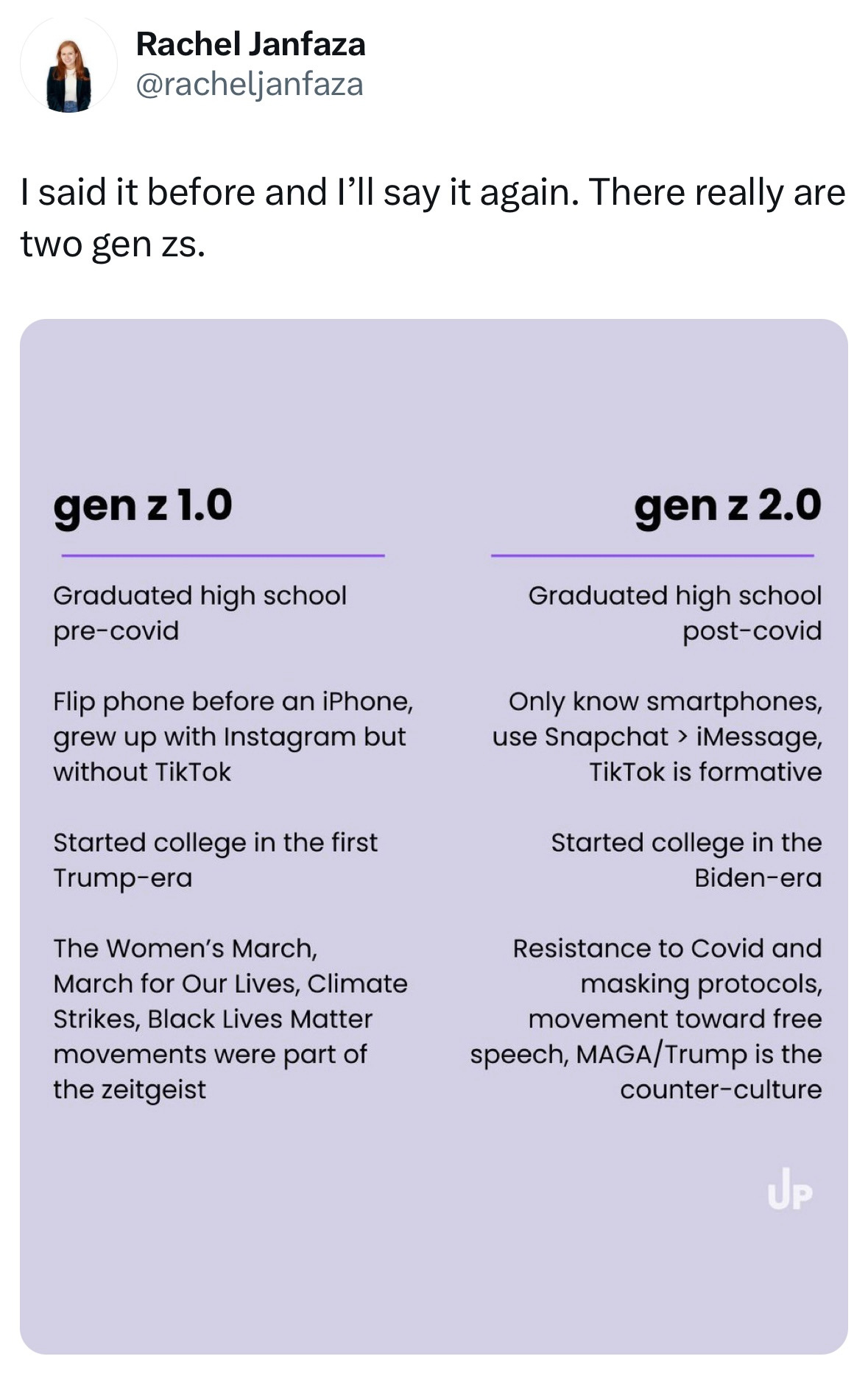Special Edition: New Data On The Two Gen Zs
The Yale Youth Poll affirms a split in younger gen z and older gen z’s politics.
I’ve said it before and I’ll say it again. There really are two gen zs. New data from Yale’s Youth Poll, a student-led public opinion research project, shows a stark divide between young Americans ages 18-21 and those ages 22-29.
Looking ahead toward 2026, the pollsters found that amongst respondents 18-21, the generic Republican ballot was +11.7, while amongst respondents 22-29, the generic Democratic ballot was +6.4.
That tracks with what I’ve seen in listening sessions and 1:1 conversations with young people across the country. Young adults who graduated high school before the Covid-19 pandemic are a bit more liberal in their ideology and perspective. This cohort was in college during President Donald Trump’s first term in office, while resistance to his actions or inaction was very much in the zeitgeist. But today’s youngest eligible voters – i.e. those who were in elementary, middle school, or high school during the Covid-19 pandemic – are leaning further to the right, in large part because they are distrustful of institutions and authority.
“The world has certainly changed a lot from our last poll which dropped in October of 2024,” said Jack Dozier, the 19-year-old deputy director of the Yale Youth Poll. “A lot of younger voters were anticipated to become more progressive, more liberal after the election, after the first few months of the Trump presidency. But we are almost three months into the Trump administration and according to this survey and many of our peers’ surveys, there’s not that pronounced of a ‘progressive or liberal awakening’ after election day.”
Last night, I reposted a chart on X that I shared earlier this year of how I see the breakdown of the two gen zs. Some of the replies have emphasized that when it comes to lived experience, older gen zers (like myself) are perhaps closer in line to millennials, rather than the younger gen zers, whose lives were totally redefined and shaped by the impact of growing up during the pandemic.
As Madeline Leesman wrote on X in response to my post: “Sometimes Gen Z people in the first category are called ‘zillennials’ for this reason.”
This chart is by no means representative of the experiences of every single gen zer. Still, it’s a helpful framework for the current political and social divides we’re seeing play out within the generation.
The youngest gen zers, born in 2012, are turning 13 this year. That means they’re still in middle school. The range of experiences within this generation, defined by the rapid evolution of technology and the development of platforms like TikTok but also generative AI products, is bound to be stark.
So what? Now more than ever, we should rethink how we classify generational cohorts. And maybe the 15-year time frame historically used to break down generations should be updated to reflect the current speed of change in a digital world.
In the meantime, when trying to communicate with and or reach members of ‘Gen Z,’ it’s critical to understand which type of a Gen Zer you are talking to.
If you’re looking for more on the theory of the split between Gen Z 1.0 and 2.0, I joined Fox News Radio’s ‘Kennedy Saves The World’ podcast to talk about the divide and my Washington Post op-ed.
The full episode, ‘Gen Z Has Lost The American Dream,’ is out today.




Great read, as always.
real